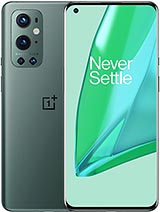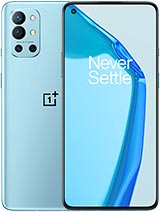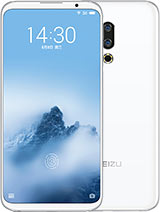OnePlus 7 Pro vs Samsung S10 Plus / iPhone XS Max / P30 Pro / Xiaomi Mi 9 Battery Life DRAIN TEST By Mrwhosetheboss
Welcome to the complete battery drain test between the brand-new one, +7 Pro and four of the top flagship phones available right now, we're pitching it against Samsung we've got Apple, we've got Huawei and due to popular demand, the me9 from Xiaomi and the first thing we're doing is putting up a white page and then using a Luke meter to calibrate the brightness level. Each phone has Wi-Fi NFC location as well as Bluetooth turned on and then pretty much everything else off now that I've done the initial setup, I'm going to unplug the cable from each phone and start the timer and bare mind that whilst the brightness and the color profile of each one will look a little different to you as because of the different angle, each phone has from the camera. So we're starting this test in the deep end, we've pulled up epic battle, simulator ?, it's a physics based game, and it's very demanding. If you take a look at the battery specifications, just below the names of the phones, you'll see that the OnePlus 7 pro is shaping up pretty well, it's got a four thousand William hour cell, which is just below the 4100 on the s10 plus, which in itself is just below the one on the P30 Pro, so you're, probably looking at the batteries in the iPhone and the Xiaomi thinking that they're going to get blitzed, it has so much smaller, but both of those phones actually have their own unique advantages in this test. I'll explain! So if you look at the battery percentages on top for both the OnePlus 7 pro in the s10 plus, it's not looking particularly good for those versions, especially considering that they have two of the largest batteries of the bunch. Okay, so take a look at the OnePlus 7 pros display specifications just below its battery specs.
It's got a six point. Six seven inch display with a quad HD plus resolution and a ninety Hertz refresh rate, so right out the box. This phone already has three things going against it in terms of battery life. It's got a massive display to power. It's got a huge amount of pixels to push, and its screen is refreshing 1.5 times as fast as the other phones, which are at 60 Hertz. There is a similar story with the s10 plus.
Whilst it doesn't have a super large display, and it doesn't have the super high refresh rate of the OnePlus 7 pro. It still does have a much higher resolution than all the other phones and that will contribute to its degradation and bear in mind. In some of these past battery tests, I have set all phones to full HD resolution, but I think in this particular case it does make sense to keep them at maximum it fair, because if one plus and Samsung are selling their phones based on key features like these screens, then it's useful to factor in how much the battery life will be when you actually use those features all right. If we draw our attention back to the test now, you can see that an hour and a half has passed we're just moving to using Spotify on all the phones and that the P30 Pro has already established a pretty substantial lead. We already know that this phone is a complete monster when it comes to battery life, but this lead is more than in our past tests, and that is because of the resolution.
The iPhone is actually holding up pretty well too. That's partly because of how well optimized the software is, and partly because iOS kind of lies to you. I've done enough of these battery tests to see a trend with these iPhones. In that in the first few percentage points, they remain very strong. They almost stay on 100% for a very long period of time and then, as the percentage starts to fall, it falls faster.
That brings us onto the sharing 9 and in the three ways that the OnePlus phone is disadvantaged. This phone benefits from it's got the smallest display of the bunch. It's got the lowest resolution, and it refreshes at a standard 60 times a second, so it'll be interesting to see if this is enough to offset it's significantly smaller battery. Ok, so we've just closed asphalt, and now we're opening up the camera and recording 4k 30 frames per second video on all the phones, and we're going to keep doing this continuously and then open it up in a video editing application so in these phones, our captor recording for 10 minutes at a time. So we have to stick by that, but after 30 minutes in total, we're going to close that down and open it up in kine master I think it's called the idea being that we're just going to load up a video in each phone's timeline and then hit the export button and see what it does to the battery.
Already, though, even after this much time, we've seen enough to be able to answer a few questions, you might know that one plus is oxygen. Os is famously very efficient, and so these differences are almost completely coming down to the differences in displays, and we've already seen that when the Galaxy S 10 plus, is running at 1080p, it gets close to the YP 30 Pro, although it still won't beat it so number one. Yes having your device set to quad HD plus resolution does massively impact the battery life if I have to guess it'd be somewhere between the 10 to 15%, mark and number 2. Setting a display to a 90 Hertz refresh rate is going to have a further impact. On top of that yeah on the 1 plus 7 Pro, you can set your resolution to full HD plus you can set the refresh rate to 60 Hertz, but then you're missing a big part of what this phone offers.
Personal preference, though, if we take a look at battery percentages again, OnePlus is pretty neck-and-neck with Apple. Here. You've then got the s10 plus and the me9, which are also pretty close and then the P30 Pro, which is kind of in a league of its own. At this point, thankfully, we are approaching the 5 hour. Mark which, in this test, given the applications we're running, is what I would call a safe mark, after which you've kind of got a phone that is at least acceptable in battery life.
It's one that you won't be worrying about it too much at least not for the first six months to a year. Ok, so the iPhone tennis max is the first phone to go and yeah, not mind-blowing performance, but at the same time it's well past the 5-hour mark, so I'm not hugely worried. Then we have the OnePlus and even though, for a while, it was hanging on to those last few percentage points. It has managed to make it a fair bit past the iPhone tennis max closer to the 6-hour mark I, gotta, say I'm, really impressed with the 9, even though, yes, the odds are in its favor in terms of screen, size and screen resolution. Its 3300 William hour battery would be very easy to dismiss, even though it's on track to coming.
Second, in this test, it's not wrong for Samsung calls it a day and the show-me me 9 a couple of minutes after Evert that leaves always P30 Pro as the winner. So that's fast-forward and see what the final times are and how they stack up against each other. Okay, so in fifth place is the iPhone 10s Mac's, pretty good time, considering the battery capacity it has, but at the same time, I'd really like to see Apple start to beef. This up the 7 pro lasted about 15 minutes longer and is a perfect example of how you can't really have everything. If you want the best qualities of the display, then the battery will take a hit.
The Galaxy S 10 plus doesn't have that awesome. Super fluid display on the OnePlus phone, but it does last half an hour longer and to a lot of people that would be more important and that was pretty much neck and neck with the 9 6 hours and 12 minutes and a bit of an underROG in this test, leaving the qua weight P30 Pro 7 hours is the time that it got, which you know is crazy, but the Huawei is limited to a full, HD plus resolution. So if you have a discerning eye, if you really want the highest resolutions, then this test is not to say that Huawei is the only way to go more vert. Even the 1 + 7 pro or the s10 plus can still offer ultra-high resolutions, while still having good battery life. If battery life was the only thing you were looking for than, yet Huawei would be king, but there is more to a firm than that.
Thanks all for watching, and I will catch you guys in the next one. You.
Source : Mrwhosetheboss



















![realme 5 Pro vs Samsung Galaxy A50s [What's Better? S02 Ep.3]](https://img.youtube.com/vi/pJAWhsxLAgw/maxresdefault.jpg )










